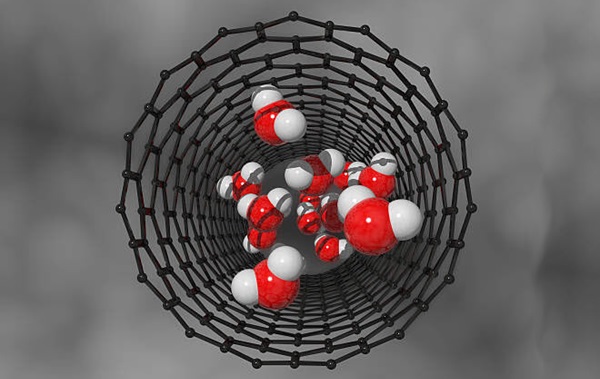Enhancing Teaching and Supervisory Staff’s Creative Problem-Solving Skills
Downloads
This research analyzed creative problem-solving (CPS) components and examined the perceptions of Thai educational personnel regarding their CPS abilities. The sample consisted of 534 primary school teachers and educational supervisors during the 2024 academic year, selected through multistage random sampling. Data were collected using a questionnaire assessing CPS skills, which were then analyzed using means (M), standard deviations (SD), and second-order confirmatory factor analysis (CFA). The research revealed that the second-order CFA model for CPS among educational personnel (teachers and supervisors) consists of five key components. Ranked from highest to lowest, these were educators' perceptions of their CPS abilities to solve problems (SOL) (M = 4.23, SD = 0.54), ability to identify problems (IDE) (M = 4.17, SD = 0.57), ability to create knowledge (CRE) (M = 4.17, SD = 0.59), ability to discover concepts (INS) (M = 4.12, SD = 0.58), and ability to discover methods to solve problems (MET) (M = 4.11, SD = 0.58). The model strongly aligned with empirical data, indicating that all three models exhibited positive component weights (β) that were statistically significant at the .01 level. This finding underscores the strength of the CPS framework for educational personnel. These findings provide compelling evidence for the effectiveness of the proposed model in assessing and enhancing CPS skills among educational professionals, contributing valuable insights to both practice and future research in this field. This study fills a gap in the literature by providing empirical evidence on the CPS capabilities of educational personnel.
Downloads
[1] Chaiyarat, K. (2024). Enhancing creative problem solving and learning motivation in social studies classrooms with gamified cooperative learning. Thinking Skills and Creativity, 54, 101616. doi:10.1016/j.tsc.2024.101616.
[2] Mamatkulovna, D. N. (2024). Cultivating Higher-Order Cognitive Skills through Phenomenon-based Learning Approach: Strategies for Deeper Learning (SDL). Ta'limning Zamonaviy Transformatsiyasi, 8(3), 235-241.
[3] Adipat, S. (2024). Transcending traditional paradigms: the multifaceted realm of phenomenon-based learning. Frontiers in Education, 9, 1346403. doi:10.3389/feduc.2024.1346403.
[4] Campbell, L. (2016). Technoparticipation: Intermeshing performative pedagogy and interruption. Body, Space & Technology, 15(0), 1–14. doi:10.16995/bst.16.
[5] Pimdee, P., Sukkamart, A., Nantha, C., Kantathanawat, T., & Leekitchwatana, P. (2024). Enhancing Thai student-teacher problem-solving skills and academic achievement through a blended problem-based learning approach in online flipped classrooms. Heliyon, 10(7), e29172. doi:10.1016/j.heliyon.2024.e29172.
[6] Siriphatcharachot, P., Sukkamart, A., Thongkaw, A., Pimdee, P., & Moto, S. (2025). High School Student Creativity, Innovation, and Teamwork Skills from Teacher’s Perspective: A Second-Order Confirmatory Factor Analysis. International Journal of Instruction, 18(1), 39–60. doi:10.29333/iji.2025.1813a.
[7] Klomim, K., Kuayngern, B., & Dhamatrakool, S. (2024). The Development of the Phenomena-based Learning Model Accompanied by STEM for Enhancing Students’ Competency in Science Learning Management. Community and Social Development Journal, 25(2), 195–211. doi:10.57260/csdj.2024.268387.
[8] İzci, K. (2024). Promoting Computational Thinking Through STEM Education. Integrating Computational Thinking Through Design-Based Learning. Springer, Singapore. doi:10.1007/978-981-96-0853-9_10.
[9] Dimitriadou, E., & Lanitis, A. (2023). A critical evaluation, challenges, and future perspectives of using artificial intelligence and emerging technologies in smart classrooms. Smart Learning Environments, 10(1), 12. doi:10.1186/s40561-023-00231-3.
[10] Ali, R., & Elkot, M. A. (2024). Empowering Educators Integrating Computational Thinking, AI, and STEM. Empowering STEM Educators With Digital Tools, 29–58. IGI Global Scientific Publishing, Pennsylvania, United States. doi:10.4018/979-8-3693-9806-7.ch002.
[11] Gürdür Broo, D., Boman, U., & Törngren, M. (2021). Cyber-physical systems research and education in 2030: Scenarios and strategies. Journal of Industrial Information Integration, 21, 100192. doi:10.1016/j.jii.2020.100192.
[12] Foster, J., & Yaoyuneyong, G. (2016). Teaching innovation: Equipping students to overcome real-world challenges. Higher Education Pedagogies, 1(1), 42–56. doi:10.1080/23752696.2015.1134195.
[13] Ditsuwan, S., & Sukkamart, A. (2022). School Management Factors Affecting Student Quality: A Case Study of the Thai Triam Udom Suksa Pattanakarn School Group. Journal of Higher Education Theory and Practice, 22(12), 156–169. doi:10.33423/jhetp.v22i12.5472.
[14] Kale, U., & Akcaoglu, M. (2020). Problem Solving and Teaching How to Solve Problems in Technology-Rich Contexts. Peabody Journal of Education, 95(2), 127–138. doi:10.1080/0161956X.2020.1745612.
[15] Wannapiroon, N., & Pimdee, P. (2022). Thai undergraduate science, technology, engineering, arts, and math (STEAM) creative thinking and innovation skill development: a conceptual model using a digital virtual classroom learning environment. Education and Information Technologies, 27(4), 5689–5716. doi:10.1007/s10639-021-10849-w.
[16] Blegur, J., Ma’mun, A., Berliana, ., Mahendra, A., Alif, M. N., Juliantine, T., & Lumba, A. J. F. (2024). Integrated Learning Models for Micro-Teaching Course. Emerging Science Journal, 8(6), 2480–2500. doi:10.28991/ESJ-2024-08-06-020.
[17] Worrathammo, P. W., Thairoongrojana, S. (2024). Teacher Professional Development in Thailand: Enhancing Pedagogical Skills for 21st-Century Learners. Journal of Exploration in Interdisciplinary Methodologies (JEIM), 1(3), 36-44.
[18] Nilimaa, J. (2023). New Examination Approach for Real-World Creativity and Problem-Solving Skills in Mathematics. Trends in Higher Education, 2(3), 477–495. doi:10.3390/higheredu2030028.
[19] Samson, P. L. (2015). Fostering Student Engagement: Creative Problem-Solving in Small Group Facilitations. Collected Essays on Learning and Teaching, 8(1), 153–164. doi:10.22329/celt.v8i0.4227.
[20] Urban, K., & Urban, M. (2023). How can we measure metacognition in creative problem-solving? Standardization of the MCPS scale. Thinking Skills and Creativity, 49, 101345. doi:10.1016/j.tsc.2023.101345.
[21] Chen, H. L., & Chen, Y. J. (2019). Influence of a Creative Problem-Solving Approach on College Students’ Creativity and Its Relation With Team Cohesion. Journal of Research in Education Sciences, 64(3). doi:10.6209/JORIES.201909_64(3).0007
[22] Lee, T., O’Mahony, L., Lebeck, P. (2023). Creative Problem-Solving. In: Creativity and Innovation. Palgrave Macmillan, Singapore. doi:10.1007/978-981-19-8880-6_5.
[23] Mejía-Villa, D. A., Torres-Guevara, D. L. E., Prieto-Sandoval, D. V., Cabra, D. J., & Jaca, D. C. (2023). Training for sustainability through biomimicry and creative problem-solving processes. Thinking Skills and Creativity, 49, 101359. doi:10.1016/j.tsc.2023.101359.
[24] Sari, D. M., Ikhsan, M., & Abidin, Z. (2018). The development of learning instruments using the creative problem-solving learning model to improve students’ creative thinking skills in mathematics. Journal of Physics: Conference Series, 1088, 012018. doi:10.1088/1742-6596/1088/1/012018.
[25] Kanchanachaya, N., & Shinasharkey, T. (2015). A Study on Interactions Between Anonymous and Non-anonymous Pre-service Teachers in Blended Learning Using Creative Problem Solving Technique to Enhance Pre-service Teachers’ Ability in Professional Practices. Procedia - Social and Behavioral Sciences, 174, 2401–2406. doi:10.1016/j.sbspro.2015.01.908.
[26] Sophonhiranrak, S., Suwannatthachote, P., & Ngudgratoke, S. (2015). Factors Affecting Creative Problem Solving in the Blended Learning Environment: A Review of the Literature. Procedia - Social and Behavioral Sciences, 174, 2130–2136. doi:10.1016/j.sbspro.2015.02.012.
[27] Wang, H. (2019). Fostering learner creativity in the English L2 classroom: Application of the creative problem-solving model. Thinking Skills and Creativity, 31, 58–69. doi:10.1016/j.tsc.2018.11.005.
[28] Hsia, L. H., Lin, Y. N., & Hwang, G. J. (2021). A creative problem solving-based flipped learning strategy for promoting students’ performing creativity, skills and tendencies of creative thinking and collaboration. British Journal of Educational Technology, 52(4), 1771–1787. doi:10.1111/bjet.13073.
[29] Treffinger, D. J., Isaksen, S. G., & Stead-Dorval, B. (2023). Introduction. Creative Problem Solving, 1–13, Routledge, New York, United States. doi:10.4324/9781003419327-1.
[30] Chen, C. H., Hung, H. T., & Yeh, H. C. (2021). Virtual reality in problem-based learning contexts: Effects on the problem-solving performance, vocabulary acquisition and motivation of English language learners. Journal of Computer Assisted Learning, 37(3), 851–860. doi:10.1111/jcal.12528.
[31] Haavold, P. Ø., & Sriraman, B. (2022). Creativity in problem solving: Integrating two different views of insight. ZDM - Mathematics Education, 54(1), 83–96. doi:10.1007/s11858-021-01304-8.
[32] Kumar, M. S. (2023). Chapter-9 creative problem-solving: Thinking outside the box. The Art of Critical Thinking: Exploring Ideas in Liberal Arts, Inkbound Publishers, Sivaganga, India.
[33] Chamrat, S., Suree, N., Wattanakasiwich, P., Sipitakiat, A., Damrongpanit, S., Jaipong, P., & Manokarn, M. (2024). Exploring STEM and Coding Development for Thai Youth Through a System Theory Perspective. Journal of Community Development Research (Humanities and Social Sciences), 17(1), 31-51. doi:10.14456/jcdr-hs.2024.3.
[34] Kaewkumkong, A. (2024). Enhancing ASEAN Community educational cooperation in Thailand through a school partnership program with Indonesia: Policy performance, choices, and recommendations. (2023). Kasetsart Journal of Social Sciences, 45(1), 1. doi:10.34044/j.kjss.2024.45.1.01.
[35] Hancock, G. R., & Freeman, M. J. (2001). Power and sample size for the root mean square error of approximation test of not close fit in structural equation modeling. Educational and Psychological Measurement, 61(5), 741–758. doi:10.1177/00131640121971491.
[36] Kline, R. B. (2023). Principles and Practice of Structural Equation Modeling. Guilford Publications, New York, United States.
[37] Pimdee, P., & Leekitchwatana, P. (2022). Appropriate Internet Use Behavior (AIUB) of Thai Preservice Teachers: A Hierarchical Linear Model (HLM) Analysis. International Journal of Instruction, 15(1), 489–508. doi:10.29333/iji.2022.15128a.
[38] Ruenphongphun, P., Sukkamart, A., & Pimdee, P. (2021). Thai undergraduate digital citizenship skills education: A second-order confirmatory factor analysis. World Journal on Educational Technology: Current Issues, 13(3), 370–385. doi:10.18844/wjet.v13i3.5937.
[39] Wadtan, R., Sovajassatakul, T., & Sriwisathiyakun, K. (2024). Effects of team-based Ubiquitous learning model on students’ achievement and creative problem-solving abilities. Cogent Education, 11(1), 2303550. doi:10.1080/2331186X.2024.2303550.
[40] Chuenban, P., Sornsaruht, P., & Pimdee, P. (2021). How brand attitude, brand quality, and brand value affect Thai canned tuna consumer brand loyalty. Heliyon, 7(2), e06301. doi:10.1016/j.heliyon.2021.e06301.
[41] Byrne, B. M. (2013). Structural Equation Modeling with Mplus. Routledge, New York, United States. doi:10.4324/9780203807644.
[42] Doğan, İ. (2022). A simulation study comparing model fit measures of structural equation modeling with multivariate contaminated normal distribution. Communications in Statistics: Simulation and Computation, 51(5), 2526–2536. doi:10.1080/03610918.2019.1698745.
[43] Khademi, A., Wells, C. S., Oliveri, M. E., & Villalonga-Olives, E. (2023). Examining Appropriacy of CFI and TLI Cutoff Value in Multiple-Group CFA Test of Measurement Invariance to Enhance Accuracy of Test Score Interpretation. SAGE Open, 13(4), 21582440231205350. doi:10.1177/21582440231205354.
[44] Hair, J. F., Howard, M. C., & Nitzl, C. (2020). Assessing measurement model quality in PLS-SEM using confirmatory composite analysis. Journal of Business Research, 109, 101–110. doi:10.1016/j.jbusres.2019.11.069.
[45] Jöreskog, K. G., Olsson, U. H., & Y. Wallentin, F. (2016). Multivariate Analysis with LISREL. Springer Series in Statistics: Springer, Cham, Switzerland. doi:10.1007/978-3-319-33153-9.
[46] Tabachnick, B. G., & Fidell, L. S. (2013). Using Multivariate Statistics (6th ed.). MA: Pearson, Boston, United States.
[47] Whittaker, T. A., & Schumacker, R. E. (2022). A Beginner’s Guide to Structural Equation Modeling. Routledge, New York, United States. doi:10.4324/9781003044017.
[48] Van Hooijdonk, M., Mainhard, T., Kroesbergen, E. H., & Van Tartwijk, J. (2023). Creative problem solving in primary school students. Learning and Instruction, 88, 101823. doi:10.1016/j.learninstruc.2023.101823.
[49] Kovač, D., Bakator, M., Palinkaš, I., Gaborov, M., & Ćoćkalo-Hronjec, M. (2023). Creative problem solving in modern organizations. Proceedings of the XIII International Symposium Engineering Management and Competitiveness, 16-17 June, 2023, Zrenjanin, Serbia.
[50] Isaksen, S. G. (2023). Developing Creative Potential: The Power of Process, People, and Place. Journal of Advanced Academics, 34(2), 111–144. doi:10.1177/1932202X231156389.
[51] Lasaiba, M. A., & Lasaiba, D. (2023). Enhancing Process Skills and Learning Outcomes: A Comparative Study of the Treffinger Learning Model. Journal of Innovative Science Education, 12(2), 180–191. doi:10.15294/jise.v12i2.64723.
[52] Vygotsky, L., & Cole, M. (2018). Lev Vygotsky: Learning and social constructivism. Learning Theories for Early Years Practice. Sage Publications, Thousand Oaks, United States.
[53] Almulla, M. A. (2023). Constructivism learning theory: A paradigm for students’ critical thinking, creativity, and problem solving to affect academic performance in higher education. Cogent Education, 10(1), 2172929. doi:10.1080/2331186X.2023.2172929.
[54] Ernawati, M. D. W., Rusdi, M., Asrial, A., Muhaimin, M., Wulandari, M., & Maryani, S. (2022). Analysis of problem based learning in the scaffolding design: Students’ creative-thinking skills. Cypriot Journal of Educational Sciences, 17(7), 2333–2348. doi:10.18844/cjes.v17i7.7551.
[55] Kolb, D. A., Boyatzis, R. E., & Mainemelis, C. (2014). Experiential Learning Theory: Previous Research and New Directions. Perspectives on Thinking, Learning, and Cognitive Styles. Routledge, New York, United States. doi:10.4324/9781410605986-9.
[56] Arslantaş, T.K. (2024). Theoretical Framework for Integrating Computational Thinking in Education. In: Saritepeci, M., Yildiz Durak, H. (eds) Integrating Computational Thinking Through Design-Based Learning. Springer, Singapore. doi:10.1007/978-981-96-0853-9_2.
[57] Charoentham, M., Kantathanawat, T., Pimdee, P., & Teerasoonthontai, K. (2025). Assessing creative problem-solving competencies in primary school educators: A confirmatory factor analysis approach. Edelweiss Applied Science and Technology, 9(1), 292–307. doi:10.55214/25768484.v9i1.4111.
[58] Vandeweyer, M., Espinoza, R., Reznikova, L., Lee, M., & Herabat, T. (2020). Thailand’s education system and skills imbalances: Assessment and policy recommendations. Organisation for Economic Co-operation and Development (OECD), Paris, France. doi:10.1787/b79addb6.en
[59] Tang, H., Dai, M., Yang, S., Du, X., Hung, J. L., & Li, H. (2022). Using multimodal analytics to systemically investigate online collaborative problem-solving. Distance Education, 43(2), 290–317. doi:10.1080/01587919.2022.2064824.
[60] Murwaningsih, T., & Fauziah, M. (2020). The Effectiveness of Creative Problem Solving (CPS) Learning Model on Divergent Thinking Skills. International Journal of Science and Applied Science: Conference Series, 4(1), 78. doi:10.20961/ijsascs.v4i1.49460.
- This work (including HTML and PDF Files) is licensed under a Creative Commons Attribution 4.0 International License.




















